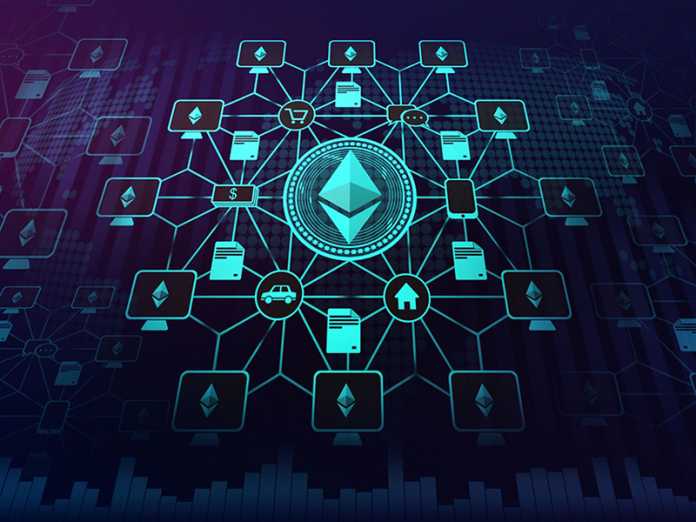First, there is Bitcoin, a cryptocurrency, created by an unknown person or group of persons that goes by the name Satoshi Nakamoto. Bitcoin was created as a reward for a process known as mining. Eventually, other cryptocurrencies follow suit, like Namecoin and Litecoin. Then someone thought of recording all the transactions digitally in a ledger, publicly, thus, paving the way for Blockchain existence.
What is DeFi? It stands for Decentralized Finance. DeFi has long been existing with Bitcoin, it only became popular when it was built on the Ethereum Blockchain.
In opposition to traditional finance, DeFi is a system of financing where digital banking services are made minus the middleman. All transactions are made publicly without any permission to any entity or authority.
When it comes to DeFi tokens, these are financial applications running on blockchains which mirror concepts successfully used in traditional banking and finance, such as stocks. There are many kinds of DeFi tokens but we will discuss a few tokens which have shown a great potential to trend in 2021.
Trending tokens
SNX token
SNX which is from the Synthetix network. A derivatives and a decentralized exchange that is built on Ethereum which you can trade a bunch of derivatives.
This will be a huge token in 2021 because this derivative is actively traded as of now. But, I believe this area is going to become bigger in the future because, at present, the biggest market.in trading is the derivative market. It has a one quadrillion valuation in its market cap. So, the overall market cap for the derivative market is estimated to be around 1 quadrillion dollars. If just a fraction of that were to be traded on the Synthetix exchange, this Synthetix token will be worth a lot of money because you need the Synthetix token in order to mint these Synthetix derivatives.
Synthetix has a ton of different assets and they plan to add more in the future. They also have a second exchange called quenta and this is used to trade different assets that are not unique to Ethereum. This is for trading forex, traditional equities, different commodities and various cryptocurrencies that are not native to the network.
Synthetix has great potential in 2021 because of what we just mentioned but because it’s been up 500% for just this year and still climbing.
Aave token
A token for lending and borrowing, used to be called Lend. They did a migration from Lend token to the Aave token, moving it from a hundred Lend to one Aave and that really increased the price of it from that migration. This token had quite a surge as of recent but, we are still bullish on it nonetheless.
They are a competition to Compound, Maker and all borrowing and lending platforms but they stay innovative and they release with new iterations constantly. The team behind them has been putting out updates on a regular basis. If you’re going to be borrowing and lending, we recommend, the best choices would be Aave.
Ren token
This is a token for collateralizing positions onto other chains. This is a cross chain bridge which does it in a trustless way in a decentralized manner. There is a big increase of Bitcoin onto Ethereum and one of the best ways to do that is to use the Ren token via the Ren Bridge.
So, if you go to the Ren website it shows that this bridge is not only made for Bitcoin but, for other cryptocurrencies, as well. This is an agnostic chain bridge to go to Ethereum or other chains.
Nexus Mutual token
This token has increased recently but it is still undervalued because the insurance market in DeFi is underserved. There is very little insurance to go around for all of these smart contracts.
In so doing, this will accrue more value over time as more smart contacts become insured versus having no insurance.
Owning the Nexus Mutual token can get a yield on it by supplying it for any of these protocols supplying insurance for.
Balancer token
This is a great protocol for decentralized exchanges. What makes this one unique is that it’s not like the uniswap protocol wherein you can only add two tokens. This protocol is a multi-asset token pool where you can deposit multiple tokens in the pool. You are not restricted to only two tokens; you can add as many as eight tokens into the Balancer pools and you can supply just one of those tokens if you like. This one is an improvement or provides a different market fit for the decentralized exchanges. I’m very positive on Balancer that it will perform as expected because it provides many use cases, besides the decentralized exchange volume has been increasing. Balancer will be one of these pools that increases with it as well because Balancer is unique in how they provide liquidity to the pools.
Final thoughts
Every one of these tokens mentioned above has the most positive trend of all the various DeFi tokens in the market. Uniswap and Curve may be bullish but you have to add only one asset or two assets unlike the tokens in the list which you can add either just one or a lot more.
Upon observing the total value locked, a lot of the one that are mentioned have good metrics. All of them seem to be up within the past few days and the revenues generated from this token are pretty amazing. If you see a trend in DeFi continuing to go up, then these tokens are must have.in 2021.
As of September 30, 2020, the total market capitalization of DeFi tokens has reached over $16 bln, which represents one-third of the total Bitcoin capitalization. According to Google Trends, the popularity of DeFi is continuing to grow exponentially. The amount of revenue to this kind of protocol is enormous, even unlimited in a sense. But every money making endeavour has its risk. So, try to be prudent in making decisions.
Disclaimer: This article contains sponsored marketing content. It is intended for promotional purposes and should not be considered as an endorsement or recommendation by our website. Readers are encouraged to conduct their own research and exercise their own judgment before making any decisions based on the information provided in this article.

































































